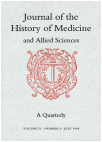Book Review
Michael R. Lynn, Journal of the History of Medicine and Allied Sciences 57.2 (April 2002): 228-229.
Miriam Claude Meijer. Race and Aesthetics in the Anthropology of Petrus Camper (1722-1789). Amsterdam, Rodopi, 1999. x, 251 pp. € 65 (paper).

Internationally known and respected during his lifetime, the Dutch savant Petrus Camper (1722-1789) has received comparatively little attention from modern historians. A scientific jack-of-all-trades, Camper pursued in-depth studies in a wide variety of fields including surgery, midwifery, veterinary science, zoology, physicotheology, education, physiocracy, dike maintenance, and politics. He received his education at the University of Leyden from some of the most famous scholars of his day, including the natural philosophers William Jacob's Gravesande and Petrus van Musschenbroek and the medical doctors Hieronymus David Gaubius and Bernhard Siegfried Albinus. In this book, Meijer concentrates on one aspect of Camper's scientific work, the development of his physical anthropology and his views on race and beauty. Although Meijer's study touches on many aspects of Camper's extremely varied intellectual interests, her main thesis centers on his work in comparative anatomy and, more specifically, his development of the facial angle thesis. While later savants interpreted this theory to help support racial prejudices, Meijer claims that Camper used this idea to demonstrate racial equality. Meijer seeks to place the facial angle thesis back into the context of Camper's other efforts in physical anthropology and aesthetics, disciplines that were connected in Camper's work.
Camper created his facial angle thesis amidst contemporary debates on creation, the origin of races and their anatomical differences, the place of humanity on the great chain of being, the relationship between man and animals (especially the "orang-utan"), and the question of relative beauty. Essentially, Camper drew side-by-side illustrations for a number of crania including, in order, a Greco-Roman statue, a European, a Kalmuck, an Angolan, and, last, an orangutan. By measuring the facial angle (the angle from the front of the incisor teeth to the prominent part of the forehead), savants could determine their place within, or outside, the hierarchy of humanity. Roman and Greek statues tended to have a facial angle of 85-100 degrees, while Europeans fell close to this idealized standard with a facial angle of about 80 degrees. Images of the Kalmuck and the Angolan followed, both with a facial angle of 70 degrees. Last in this continuum was the orangutan, at about 58 degrees. According to Meijer, Camper used this information to show that Africans, represented by the Angolese head, were related to Europeans and, therefore, should be considered as equals. Camper broadcast his thesis repeatedly through public lectures at art, medical, and scientific academies. However, future readers of Camper's thesis (published posthumously) tended to focus on the fact that the African was drawn next to the orangutan on the continuum and so used this method to exclude non-Europeans from the ranks of humanity and justify such practices as slavery.
The aesthetic side of Camper's argument came from his desire to demonstrate that not only were Africans equal to Europeans in terms of the facial angle, but that any differences in the shape of skulls or skin color were based on environmental conditions. Since the features of Africans were just as natural as those of Europeans, then they too were fellow creatures, had natural rights, and were equal before God. Camper wanted to convince people to set aside the aesthetic preferences that he felt had led them to racial prejudices.
Meijer makes a strong case for the egalitarianism of Camper over his supposed racism. While in no way attempting to offer a complete intellectual biography, Meijer incorporates much of the relevant information from Camper's work and outlines his views on color, the great chain of being, and artistic representations of humans and animals. She also includes a translation of Camper's most influential statement on this subject, the "Lecture on the Origin and Color of Blacks." More important, Meijer contextualizes Camper's scientific work within that of his contemporaries and helps delineate the formation of his theories and their place within the eighteenth-century scientific community. The result is a book that focuses on Camper but also provides a nicely balanced outline of Enlightenment debates on the science of humanity.
Michael R. Lynn, Ph.D., Department of History, Agnes Scott College, Decatur, Georgia 30030.
[ Dr. Meijer's Résumé ] [ CV in MS Word XP 2002 ] [ CV in plain/simple text ] [ CV in PDF ]
[ G. de Buffon (1707-1788) ] [ Petrus Camper (1722-1789) ] [ L.-J.-M. Daubenton (1716-1800) ]
[ Enlightenment Anthropology ]
[ Orang-Utang Graphics ] [ 18th-Century Concepts ] [ 17th-Century New France ] [ Translations ] [ N. B. Jenison (1876-1960) ] [ Conference Papers ] [ Publications ]
[ Dr. Meijer's Book ] [ Rodopi ] [ Amazon.com ] [ PDF Order Form ]
[ 1st Review ] [ 2nd Review ] [ 3rd Review ]
[ 4th Review ] [ 5th Review ]
[ Index ] [ Sitemap ]
Miriam Claude Meijer, Ph.D.
03/27/05